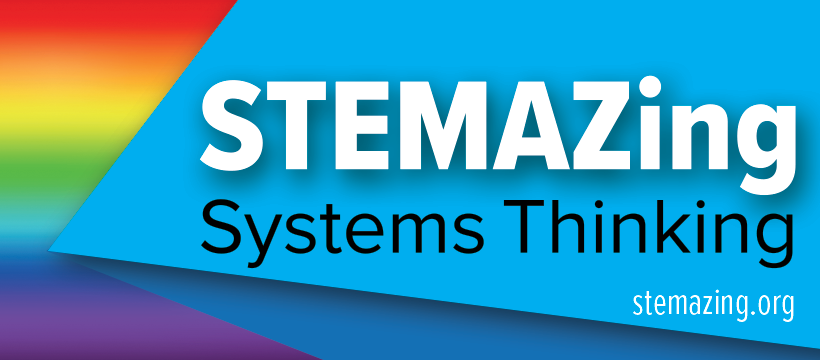High School
Insect Flight – Notice and Wonder Phenomenon (HS.L4U1.28)
High School AzSS-Aligned Resources
Lessons, videos, storylines, phenomena, and more all curated by The STEMAZing Project to link directly to 2018 Arizona Science Standards.
Read MoreHypothesis Cubes Virtual – BEST Nature of Science Lesson of ALL time!
Hypothesis cubes is the BEST nature of science lesson of all time. Engage students to use evidence to support their claims and then demonstrate the way science works by leaving the “answer” unsettled in the end. This incredible activity is now available for virtual instruction through models of the cubes made using TinkerCad. Lesson plan…
Read MoreScience is… Science is not… Nature of Science Lesson
From original Sunsets, Souls, and Senses lesson from ENSI (file found below): Explores the realm and limits of science. Engages students to give examples of topics that can be studied by science, and those that cannot. This also takes a look at descriptive terms that reflect the true nature of modern science, and those that do…
Read MoreDesign Inspirations from RAFT – STEMAZing Virtual Adaptation
Design Inspirations is taken from an Idea Sheet from RAFT (Resource Area for Teaching). The following STEMAZing Teacher Guide for Design Inspirations Virtual describes how to use this lesson virtually and provides links to prepared Google Slides options to cut and paste into your own presentation, Breakout Checklist, and links to Flippity wheels designed for…
Read MoreScience and Engineering Practices for K-12 Science Classrooms Infographic
This interactive infographic from the National Academies Press highlights essential practices for K-12 science classrooms from A Framework for K-12 Science Education with references to the contents of the full report. Click HERE for fully interactive infographic. Below is a static PDF version of the infographic.
Read MoreIDEAS Engineering Journal
The IDEAS Engineering Journal is designed to be used to engage students to iterate through then engineering design process using a starting model of something they have built. Two looper airplanes, pool noodle rockets, and rattle writers (aka doodle bots) are some examples you might consider. Peer critique is incorporated into the journal. It can…
Read MoreREAL Primary Colors Book
What are the primary colors? If you ask a physicist, they will have to ask you a question back. Are you talking about the primary colors of light, used for color addition, or the primary colors of paint, used for color subtraction? Use this book as a resource to learn what the REAL primary colors…
Read MoreNotice Phenomenon and Wonder Question Journals
Notice Phenomenon and Wonder Question Journals come in formats that are printer friendly and in Google classroom versions for both Slides and Docs. Great tools for helping students notice and wonder how the world works! Journal version included below include Notice Phenomenon and Wonder Question Journal. This is both pieces together and requires some assembly.…
Read MoreBinary #MicDropMath Multiply This
The following lesson engages students to explore exceptionally old algorithms used by Russian and Egyptian people to multiply two numbers together. It turns out these two algorithms are connected to the binary number system, which also serves to demonstrate that the binary number system was not invented to be the language of computers. It has…
Read More